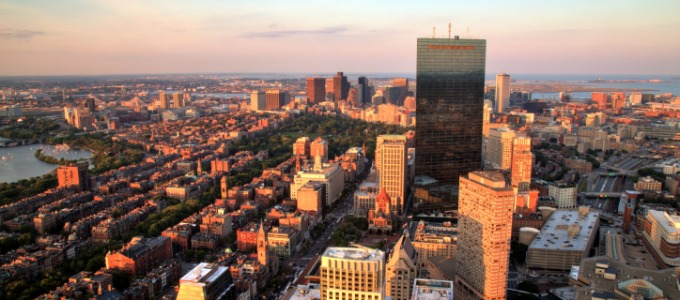On Dec. 2, 2014, Mayor Martin Walsh announced creation of Boston’s first Mayor’s Office of Diversity, appointing Shaun Blugh as the city’s chief diversity officer.
Blugh’s work has included developing and delivering diversity goals in hiring, leadership and career development, diversity training, strategic planning and recruitment. He’s also instrumental in outreach programs that target community, academic and business organizations.

Since taking on the role, Blugh has accomplished several things, including helping to reinstate the Boston Police Cadet Program, a two-year program that gives city residents between the ages of 18 and 24 on-the-job law enforcement training. Police commissioner William Evans told The Boston Globe the program helps bring in city kids, which could diversify the department. As of May, the department was 33 percent minority, even though people of color make up 53 percent of the city’s population.
A diverse police force is not Blugh’s sole endgame, however. He spoke to Diversity Executive about the work he has done and what he wants to accomplish. Edited excerpts follow.
How did the Office of Diversity get off the ground, and how did you prepare for this role?
Before getting this role, I worked at a private equity firm that specialized in minority-owned, women-owned, veteran-owned businesses. I got to see a lot of the landscape of cities and states doing great work and doing more business with these types of diversifiers. I really want to make sure we see some movement here in Boston with that, and from a recruiting standpoint make sure we’re doing our best to outreach and bring in as much diverse talent as we can as an organization.
In April, we released the first “Workforce Profile Report” in Boston’s history. It showed a breakdown of all the different departments and really set the roadmap for what the Mayor’s office would be about going forward.
We went through a lot of the human resources data, looked at all the different departments, saw which departments are doing a great job of recruiting, what else we could do to support the departments that weren’t. We made sure that we have all hands on deck to make sure we address those issues.
How did you help the departments in need?
We looked at the reinstitution of the cadet program and creation of a chief diversity officer for the fire department — those are some of our larger departments. It isn’t just about numbers; we have to look at scope and size.
How has the Boston Police Department responded to the current discussion around officer diversity?
Commissioner Evans and his leadership team are doing a great job of community policing. It’s about being transparent, making sure that leaders in the community and the police department are working together to address issues of violence, and make sure we’re doing the best to protect the citizens we serve.
Compared to past experiences in the private sector, what is it like working in a city or municipal environment?
It’s different, but I do enjoy it. Working in Boston on this subject matter is great and powerful and shows the vision that Mayor Walsh has for this city and this administration is being very inclusive and welcoming to people of all backgrounds.
You’ve said your goals aren’t technically a numbers game. What have you done to go beyond the numbers, and what advice do you have for others?
When I say going beyond the numbers, it’s about making sure we create a culture that’s inclusive to the people we have already working here and those who are looking to come work here. Especially in government it’s important that people look through a diversity and inclusion lens because a lot of our constituents come from all across the world, all across the country. We have to look at the ways in which we support them, and make sure that when we provide our services we’re respectful of the different backgrounds we serve.















